This article was co-authored by Marc Kayem, MD. Dr. Marc Kayem is a board certified Otolaryngologist and Facial Plastic Surgeon based in Beverly Hills, California. He practices and specializes in cosmetic services and sleep-related disorders. He received his Doctorate in Medicine from the University of Ottawa, is board certified by the American Board of Otolaryngology, and is a Fellow of the Royal College of Surgeons of Canada.
There are 21 references cited in this article, which can be found at the bottom of the page.
This article has been viewed 29,203 times.
Sleeping on your back can benefit your posture and prevent back pain, but it doesn't come naturally to most people. Pillows and weighted blankets may keep you from rolling over in your sleep, while stretching beforehand helps to relieve back pain. Habits that promote easier sleep are also helpful while getting used to this position.
Steps
Staying on Your Back
-
1Sleep under a weighted blanket. If you are used to sleeping on your side or stomach, weighted blankets will simulate the comforting pressure that you feel on the front of your body in these positions. They are most commonly used to help autistic people sleep, but have been shown to help people suffering from anxiety and insomnia.[1] These blankets can be bought online. It is recommended that they weigh 10% of your body weight.
-
2Build a "wall of pillows" around yourself to keep you from rolling over. Surrounding yourself with pillows on all sides will make you less likely to roll over in your sleep:
- Place a pillow on either side of your head.
- Put a pillow under both of your arms and legs.
- Line up pillows on either side of your legs.[2]
Advertisement -
3Prop up your head and torso if the "wall" doesn't work. Pile up enough pillows under your head and torso so that when you lay down, your upper body is at an incline. If you can fall asleep in this position you will be far less likely to roll over.
- "Wedge" pillows are designed with this technique in mind and can easily be bought online.[3]
-
4Invest in a “bumper belt” if you don't use pillows. “Bumper belts” are made by a variety of manufacturers. They resemble a belt or vest with “bumpers” on the sides which are either inflatable or made of foam. They can be purchased online and in some stores that sell bedding.[4]
-
5Make your own “bumper belt” with tennis balls if you don't want to buy one. Taping tennis balls to the arms or hips of your pajamas works in the same way as the bumper belt. If you turn over in your sleep the discomfort should cause you to return to your back without waking.
- Position a tennis ball at the side seam of your pajamas at either the arms or the hips.
- Attach the tennis ball with tape. Tape all the way around your pajama arm/waist multiple times to keep it secure, without cutting off your circulation.[5]
-
6Use a travel pillow to keep your neck straight. These U-shaped pillows are usually for people who have to sleep upright. If you’re sleeping on your back, they will prevent your neck from turning uncomfortably to one side.[6]
Adopting Habits that Improve Sleep
-
1Get lots of sun early in the day. Exposure to bright light between the hours of 8 AM and 12 PM helps people to sleep better at night. Regular sunlight helps your brain learn the difference between the time to wake and the time to sleep, and helps set your circadian rhythm. Even office workers with a window in their office sleep an average of 46 minutes longer than those who don't.[7]
-
2Avoid electronic screens before bedtime. The circadian rhythm which governs your sleep is highly influenced by light. Unfortunately, the “blue” light emitted by your phone, television, and computer can trick your brain into thinking it is still daytime, making it much harder to fall asleep. Doctors recommend staying away from screens for at least 2 hours before bed.[8]
-
3Put mobile devices in another room. People who sleep close to their phones and devices are more likely to be woken up in the night by notifications. Even a silent phone on your bed stand can create anxiety and distraction that makes it harder for you to fall asleep.[9]
-
4
-
5Eat foods that produce melatonin. Melatonin is the most important hormone for regulating your sleep cycle. Your body produces it naturally when you consume certain foods, and it is especially useful to eat these foods before bedtime. Some foods (like walnuts) include melatonin already, and others include vitamins that your body uses to produce it naturally:
- Walnuts and pistachios
- Dairy products
- Honey[12]
-
6Lower the temperature in your room. Ideal sleeping temperature varies from person to person, though most people sleep best between 60–67 °F (16–19 °C). This is below standard room temperature so, before you go to bed, turn down the heat.[13]
-
7Keep a regular sleep schedule. Sleeping and waking at irregular hours is linked to a host of health problems including obesity, diabetes, and depression. Going to bed and waking up at the same time every day makes it easier to fall asleep and improves the quality of your sleep. [14]
Preventing Back Pain
-
1Place a pillow under your knees. Sleeping on your back can put pressure on your spine. A small pillow under the back of your knees will relieve this pressure and keep your spine in alignment.[15]
-
2Keep your hamstrings loose. If your hamstrings are too tight, your spine absorbs the impact of your daily activities. This, in turn, causes pain that may flare up when you try to sleep on your back.[16] An easy way to stretch your hamstrings is:
- Lie on the floor with one leg straight and one leg bent. Wrap a towel around the thigh of the leg that's bent, holding one end of the towel in each hand.
- Straighten the leg as much as you can until you feel a stretch in the back of your thigh. Hold this position for as long as you can without causing pain, up to 60 seconds.
- Repeat this stretch with the other leg.[17]
-
3Stretch your hip flexors before bed. Tight hip flexors--caused by activities like running, bicycling and even sitting for extended periods--can pull your muscles out of balance, and may result in back pain.[18] To stretch your hip flexors:
- Take a big step forward so that one knee is bent in front of you and one leg is extended behind you. Make sure your front foot is forward of your front knee so that there is no pressure on your kneecaps. Keep your spine straight.
- Drop your pelvic weight forward. You will feel a stretch in the hips on the side of your back leg. Hold this position as long as it is comfortable, up to 60 seconds.
- Repeat, stretching the opposite side.
Expert Q&A
-
QuestionIs less sleep bad for you?
 Marc Kayem, MDDr. Marc Kayem is a board certified Otolaryngologist and Facial Plastic Surgeon based in Beverly Hills, California. He practices and specializes in cosmetic services and sleep-related disorders. He received his Doctorate in Medicine from the University of Ottawa, is board certified by the American Board of Otolaryngology, and is a Fellow of the Royal College of Surgeons of Canada.
Marc Kayem, MDDr. Marc Kayem is a board certified Otolaryngologist and Facial Plastic Surgeon based in Beverly Hills, California. He practices and specializes in cosmetic services and sleep-related disorders. He received his Doctorate in Medicine from the University of Ottawa, is board certified by the American Board of Otolaryngology, and is a Fellow of the Royal College of Surgeons of Canada.
Sleep Specialist Yes, it's bad for your health if you aren't getting enough sleep. Sleep is essential for good health, so maintain a healthy sleep schedule.
Yes, it's bad for your health if you aren't getting enough sleep. Sleep is essential for good health, so maintain a healthy sleep schedule.
Warnings
- Regular sleep is crucial to your health.[19] If you find that you still cannot get a good sleep after trying for more than 2 weeks, it is best that you return to your original position.[20]⧼thumbs_response⧽
- Persons prone to sleep apnea should not sleep on their backs, as it may exacerbate or even cause the symptoms.[21] If you have sleep apnea, or struggle with snoring at night, consider sleeping on your side instead.[22]⧼thumbs_response⧽
- If you feel pain at any time while stretching, discontinue the stretch until you can do it under the supervision of a professional trainer.[23]⧼thumbs_response⧽
References
- ↑ https://www.tandfonline.com/doi/abs/10.1300/J004v24n01_05
- ↑ https://www.independent.co.uk/life-style/sleeping-positions-best-back-how-to-tips-health-pain-management-meaning-a8289516.html
- ↑ https://www.independent.co.uk/life-style/sleeping-positions-best-back-how-to-tips-health-pain-management-meaning-a8289516.html
- ↑ https://www.sleep-apnea-guide.com/pillows-for-sleep-apnea.html
- ↑ https://well.blogs.nytimes.com/2011/07/11/really-the-claim-a-tennis-ball-on-the-back-of-pajamas-can-cut-snoring/?_r=0
- ↑ https://www.sleepfoundation.org/best-pillows/best-travel-pillow
- ↑ https://www.reuters.com/article/us-health-sleep-daylight/morning-daylight-exposure-tied-to-a-good-nights-sleep-idUSKCN18E23E
- ↑ https://www.health.harvard.edu/staying-healthy/blue-light-has-a-dark-side
- ↑ https://hbr.org/2015/08/research-shows-how-anxiety-and-technology-are-affecting-our-sleep
- ↑ Marc Kayem, MD. Sleep Specialist. Expert Interview. 24 October 2019.
- ↑ https://sleepfoundation.org/sleep-topics/how-alcohol-affects-sleep
- ↑ https://clinicaltrials.gov/ct2/show/NCT04207281
- ↑ https://sleep.org/articles/temperature-for-sleep/
- ↑ https://sleep.hms.harvard.edu/education-training/public-education/sleep-and-health-education-program/sleep-health-education-93
- ↑ https://www.urmc.rochester.edu/encyclopedia/content.aspx?ContentTypeID=1&ContentID=4460
- ↑ https://www.spine-health.com/wellness/exercise/specific-hamstring-stretches-back-pain-relief
- ↑ https://www.spine-health.com/wellness/exercise/easy-hamstring-stretches
- ↑ http://www.cooperinstitute.org/2016/07/15/are-tight-hip-flexors-contributing-to-your-low-back-pain
- ↑ Marc Kayem, MD. Sleep Specialist. Expert Interview. 24 October 2019.
- ↑ https://sph.umich.edu/pursuit/2020posts/why-sleep-is-so-important-to-your-health.html
- ↑ https://my.clevelandclinic.org/health/diseases/8718-sleep-apnea
- ↑ Marc Kayem, MD. Sleep Specialist. Expert Interview. 24 October 2019.
- ↑ https://www.rd.com/health/fitness/stretches-before-bed-proper/



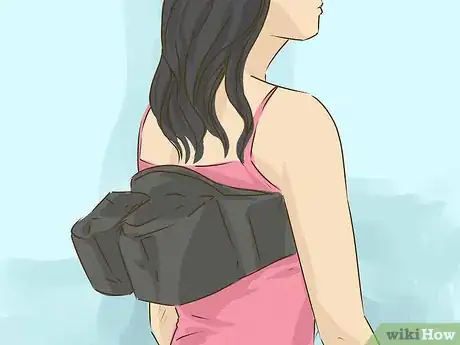





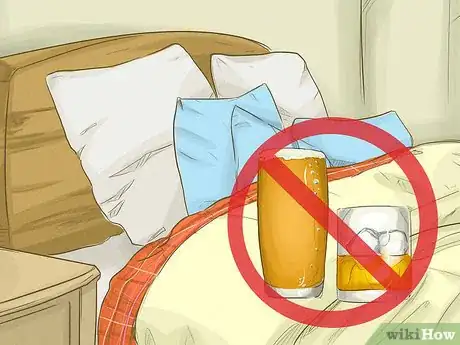




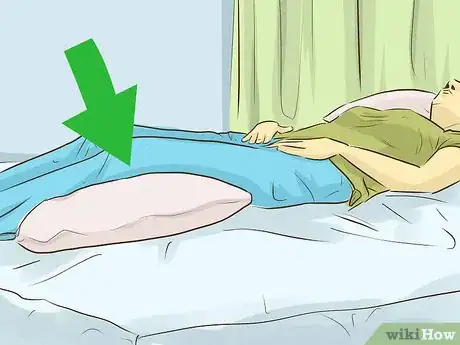
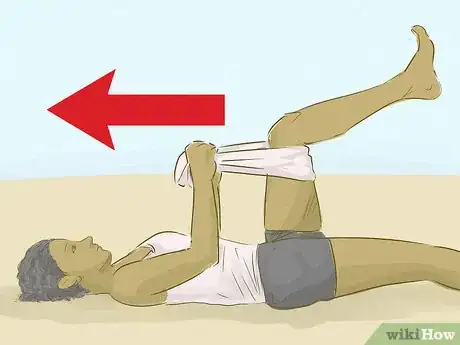







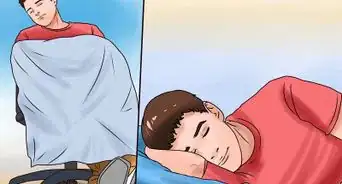
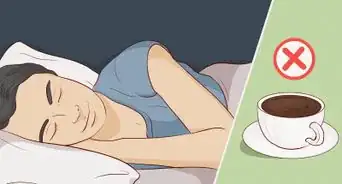


















































Medical Disclaimer
The content of this article is not intended to be a substitute for professional medical advice, examination, diagnosis, or treatment. You should always contact your doctor or other qualified healthcare professional before starting, changing, or stopping any kind of health treatment.
Read More...